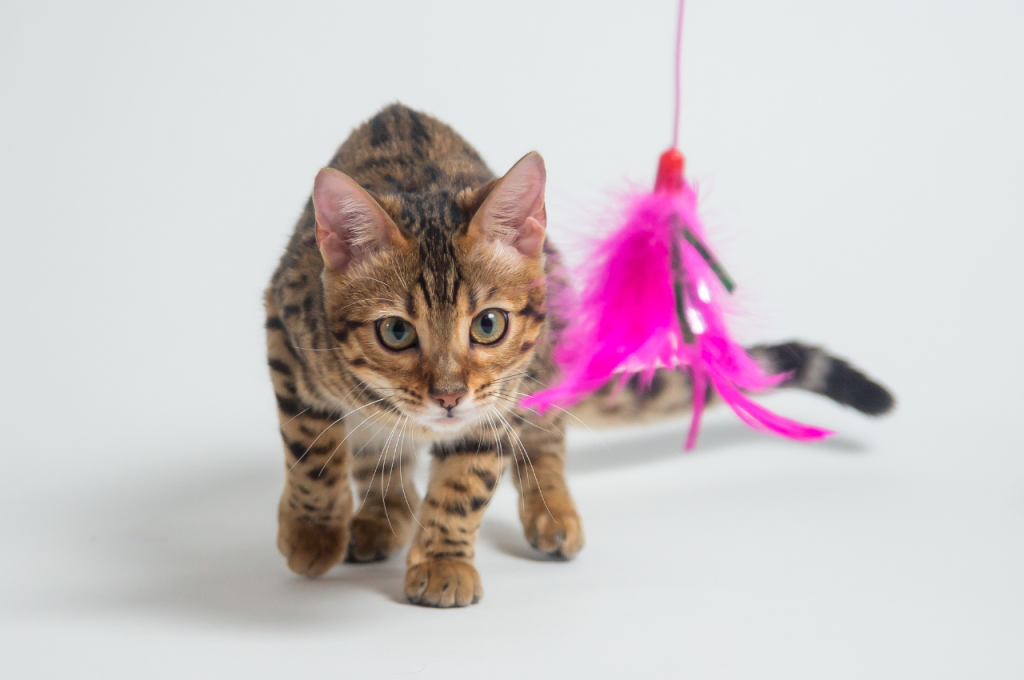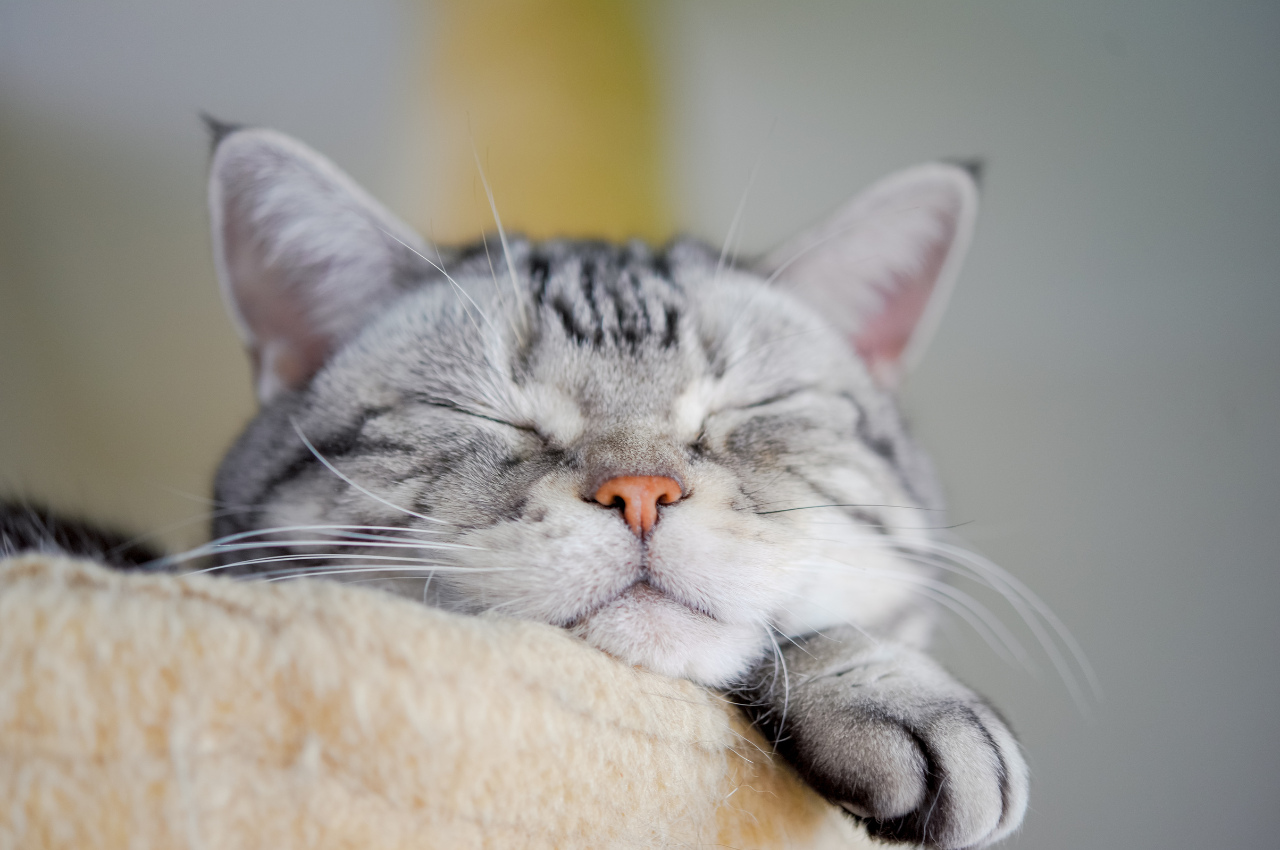To make your cat go to sleep, create a calm and comfortable environment. Introduce a bedtime routine and provide a cozy sleeping spot.
Avoid stimulating activities before bedtime and ensure your cat gets enough exercise during the day to burn off energy. Playing with your cat using interactive toys earlier in the evening helps them wind down later. Keep the room dark and quiet to promote sleepiness, mimicking a natural nighttime setting. You can also provide soft blankets or a warm bed in a quiet corner where your cat feels safe. Offering a small meal before bedtime may also help as cats often feel drowsy after eating. With consistency, your cat will start to associate this routine with sleep.
The Importance of Sleep for Cats
Sleep is essential for cats as it supports their overall health and well-being. Cats spend a significant portion of their day resting, typically between 12 to 16 hours, because sleep helps them conserve energy. It is crucial for their physical and mental recovery, aiding in muscle repair, immune function, and cognitive development. Sleep also plays a role in stress reduction, keeping cats calm and balanced. Ensuring your cat has a comfortable, quiet space to sleep will promote better rest, ultimately leading to a happier and healthier feline. Prioritizing their sleep routine can enhance their behavior and overall quality of life.

Physical Health Benefits
Cats require adequate sleep to maintain their physical well-being. Regular sleep supports their immune system, muscle repair, and overall health. It also helps in the regulation of metabolism.
Mental Well-being
Quality sleep is vital for a cat’s mental well-being. It aids in cognitive function, stress reduction, and emotional balance. Cats that sleep well are generally happier and more content.
Recognizing Sleep Patterns in Cats
Recognizing sleep patterns in cats can help you better understand their health and behavior. Cats are crepuscular, meaning they are most active at dawn and dusk while spending much of the day and night sleeping. Typically, they sleep for 12 to 16 hours a day, often in short naps. During these naps, cats experience light sleep phases, but they also enter deeper sleep for restorative rest. Changes in their usual sleep patterns, such as excessive sleeping or restlessness, may indicate stress, illness, or discomfort. Observing and understanding your cat’s natural sleep rhythms can provide valuable insight into their well-being.
Understanding Cat’s Sleep Cycle
Cats have unique sleep patterns that differ from those of humans. They experience multiple short sleep cycles throughout the day, alternating between light dozing and deep sleep. Understanding their sleep cycle is crucial in ensuring they get the rest they need.
Signs of Sleep Deprivation
Recognizing signs of sleep deprivation in your cat is essential to their well-being. If your cat is excessively irritable, lethargic, or has trouble concentrating, they may be sleep-deprived. It’s important to address any sleep issues to prevent long-term health problems.
Creating a Comfortable Sleep Environment
Creating a Comfortable Sleep Environment for your cat is essential for ensuring a restful and rejuvenating slumber. By focusing on the right bed and ideal room conditions, you can help your feline friend drift off into a peaceful sleep.
Choosing The Right Bed
When selecting a bed for your cat, opt for a soft and cozy option that provides adequate support. Consider factors such as size, material, and cushioning to ensure maximum comfort. Cats typically prefer beds with raised edges or enclosed spaces, as they mimic the feeling of security provided by a mother cat or den.
Ideal Room Conditions
Creating the ideal sleeping environment for your cat involves controlling factors such as temperature, lighting, and noise. Ensure the room is at a comfortable temperature, not too hot or too cold, and provide a quiet and dimly lit space for your cat to rest. Minimize disturbances from loud noises or sudden movements, as these can disrupt your cat’s sleep.
The Role of Diet in Sleep
A cat’s diet plays a crucial role in their sleep patterns. Providing a balanced diet and avoiding feeding them right before bed can help make your cat go to sleep. Additionally, incorporating calming ingredients in their diet, such as chamomile or valerian root, can also promote relaxation and improve their sleep quality.
Feeding Schedule
The Role of Diet in Sleep: Cats’ diet plays a vital role in regulating their sleep patterns. Certain foods can help promote better sleep for your feline friend. Maintaining a consistent feeding schedule is also crucial for establishing a healthy sleep routine.
Foods to Promote Sleep
Certain foods can aid in calming your cat and promoting better sleep. Consider incorporating the following into their diet:
- Turkey: Contains tryptophan, a precursor to serotonin and melatonin.
- Fish: Rich in omega-3 fatty acids that support brain health.
- Pumpkin: High in fiber and may aid in digestion, promoting better sleep.
- Chamomile: Can have a calming effect on cats.
Feeding Schedule
Establishing a consistent feeding schedule is key to regulating your cat’s sleep patterns. Feed your cat at the same times each day to help them develop a routine. Avoid feeding close to bedtime to prevent disruptions in their sleep.
Incorporating Play and Exercise
Encouraging play and exercise in your cat’s routine can help them sleep better at night. Interactive toys, scratching posts, and designated playtime can tire them out and lead to a more restful sleep.

Incorporating Play and Exercise is an effective way to make your cat tired and ready for sleep. Cats are natural hunters and love to play, so providing them with ample opportunities for exercise can help them expend their energy and sleep better at night. Here are some Daytime Activities and a Pre-bedtime Routine to keep your cat active and ensure they get a good night’s rest.
Daytime Activities
During the day, it’s important to engage your cat in activities that will stimulate their body and mind. Here are some ideas for keeping your cat active and entertained:
- Provide your cat with toys that encourage hunting and pouncing, such as feather wands, laser pointers, and interactive toys that dispense treats.
- Set up a play area with scratching posts, cat trees, and climbing structures so your cat can exercise and explore their environment.
- Rotate your cat’s toys regularly to keep them interested and engaged.
- Encourage your cat to play with other cats or with you to promote socialization and exercise.
Pre-bedtime Routine
Establishing a pre-bedtime routine can help signal to your cat that it’s time to wind down and get ready for sleep. Here are some tips for creating a calming routine:
- Engage in a quiet play session with your cat to help them expend any remaining energy.
- Provide your cat with a bedtime snack to help promote relaxation. This could be a small portion of their regular food or a treat specifically designed to promote sleep.
- Set up a comfortable sleeping area for your cat that is away from any distractions or noise.
- Stick to a consistent bedtime routine to help your cat establish a regular sleep schedule.
Incorporating Play and Exercise into your cat’s routine can help them sleep better at night and stay healthy and happy. By providing your cat with plenty of opportunities for exercise and establishing a calming pre-bedtime routine, you can help ensure that your furry friend gets the restful sleep they need.
Calming Techniques and Aids
Discover calming techniques and aids to help your cat sleep peacefully. Use gentle petting, soothing music, and a cozy bed to create a tranquil environment.
Calming Techniques and Aids are essential for cat owners who want to ensure their furry friends get a good night’s sleep. Many cats suffer from anxiety, which can cause them to stay awake at night. Fortunately, there are several techniques and aids that cat owners can use to help their cats relax and drift off to sleep. Some of the most effective calming techniques and aids include Pheromone Diffusers and Gentle Massage.
Pheromone Diffusers
One of the most popular calming aids for cats is Pheromone Diffusers. These diffusers release a synthetic version of the pheromones that cats produce naturally when they feel safe and secure. Synthetic pheromones help to reduce anxiety and promote relaxation, which can help cats fall asleep more easily.
Gentle Massage
Gentle Massage is another effective technique that can help cats relax and fall asleep. Begin by stroking your cat’s head and ears, then move on to gently massage their neck and back. Use slow, gentle strokes, and be sure to avoid any sensitive areas or areas where your cat may feel uncomfortable. Massaging your cat before bed can help them feel calm and relaxed, making it easier for them to drift off to sleep.
In addition to these calming techniques and aids, there are several other things cat owners can do to help their cats sleep better. Providing a comfortable sleeping area, ensuring they have plenty of toys to keep them occupied during the day, and establishing a regular sleep routine can all help to promote healthy sleep habits in cats. By using a combination of these techniques and aids, cat owners can help their furry friends get the restful sleep they need to stay happy and healthy.
Dealing with Sleep Disorders in Cats
Help your cat get a good night’s sleep by creating a calm environment. Establish a regular bedtime routine and provide a comfortable sleeping area. Additionally, engaging in interactive play and providing mental stimulation during the day can help your cat relax and sleep better at night.
Common Issues
Cats may face various sleep disorders like insomnia or excessive daytime napping.
When to See a Vet
If your cat’s sleep disturbances persist, consult a vet for proper evaluation. Dealing with Sleep Disorders in Cats: Cats can experience sleep disorders, that affect their health and behavior.
Monitoring and Adjusting Strategies
Monitoring and adjusting strategies are essential to help your cat go to sleep. Start by observing your cat’s daily routine, including their activity levels and sleep patterns. Adjust feeding times to avoid meals right before bed, and ensure your cat gets plenty of play and exercise during the day. Create a consistent nighttime routine to signal sleep time, such as dimming the lights and providing a quiet, cozy spot. If your cat still struggles to settle, consider calming aids like pheromone sprays or calming treats. Regularly assess these strategies and adjust as needed for your cat’s unique needs.

Observing Sleep Improvement
To observe sleep improvement in your cat, monitor their behavior and sleeping patterns after implementing new bedtime strategies. Track changes such as a more consistent sleep schedule, longer periods of restful sleep, and a more relaxed demeanor before bed. Look for signs that your cat is settling into their sleep routine more easily, such as decreased restlessness and increased comfort in their sleeping area. Make note of any positive changes and adjust strategies as needed to further enhance their sleep environment. Regular observation will help ensure your cat’s sleep improvements are sustained and effective.
Adapting Techniques
- Try different bedding options for comfort.
- Adjust room temperature for better sleep.
- Establish a consistent bedtime routine.
Conclusion
Ensuring your cat gets enough sleep is crucial for their overall health and well-being. By creating a calming environment, establishing a routine, providing mental and physical stimulation, and addressing any underlying health issues, you can help your feline friend get the rest they need.
Remember to be patient and consistent in your approach, and soon enough, you’ll have a contented and well-rested cat by your side.
